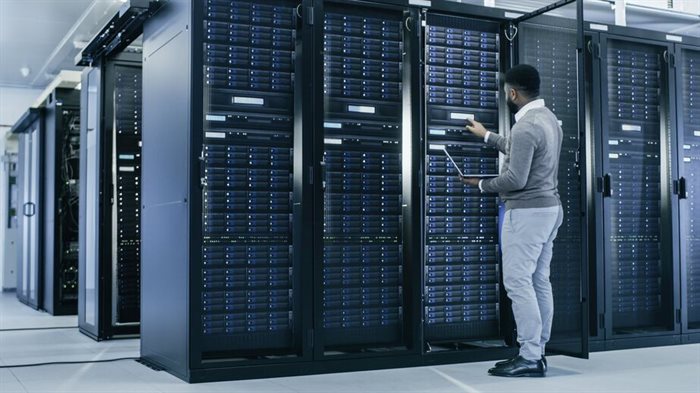Despite recent investments in data centre infrastructure in sub-Saharan Africa, much of the continent’s capacity remains in South Africa, where local providers brought more than 50MW of dedicated data centre IT load capacity online between 2017 and 2019.
Data centres remain power hungry
Adding further complexity is the unavoidable fact that data centres remain power hungry. Approximately 10% of data centre operating expenditure is consumed by power costs according to Gartner. In Africa, unstable power supplies that are still heavily fossil fuel dependent and increasingly expensive are certainly posing a significant challenge for the data centre industry to contend with.
Over-and-above the critical importance of a stable power supply, responsible corporate citizenship and meeting environmental, social, and governance (ESG) practices combine to put significant pressure on data centre owners to service the continent and ensure that Africa can keep pace with the rest of the world.
Clearly, increased capacity must be designed and built with stable power supply and net-zero targets in mind. Managing energy efficiency is core to achieving this. Since you cannot manage that which you do not measure, the power usage effectiveness (PUE) metric has become a de facto industry standard for measuring how efficiently a data centre uses energy. To improve efficiency, data centres need to deploy heating, ventilation, and air conditioning (HVAC) technology that will deliver a low annual average PUE.
Faiyad Peterson 29 Jun 2022
Strategies to increase energy efficiency
A few years ago, the annual average HVAC PUE’s were around 1.9. Current PUE figures hover around 1.5 and there is constant effort going into lowering this to 1.0. Incorporating free cooling, free heating and specifications on the efficiency of operating equipment in the HVAC designs lowers the annual energy utilisation and drives down the annual average PUE.
Another strategy to increase a data centre’s energy efficiency is widening its internal temperature and humidity range and performing upfront planning to ensure ease of maintenance. It is also important to consider improving the power usage of IT equipment by lowering the payload power that it requires. Servers consume 60% of this, so that further efficiencies can be realised by cleaning up server workloads and eliminating unnecessary usage, virtualising more workloads and replacing older and less efficient servers with new ones.
Finally, data centre owners need to optimise physical data centre space, particularly for data centres that were built before server virtualisation became commonplace. Less space needed equates to less cooling and thus power savings.
Alternative energy solutions
Energy efficiency improvements alone will not stabilise power supplies, though. In the urban context, renewable energy from rooftop solar PV panels can be incorporated into a build to offset some of the data centre’s reliance on the local grid. However, the power contribution from a rooftop solar microgrid would not be sufficient to meet the demand of a power-hungry data centre.
For this reason, we are seeing more interest in alternative energy solutions that comprise of a tri-generation plant using natural gas to power the data centre and off grid, with diesel generator backup for downtime periods. Important to this is securing a site in a hotspot area with access to gas lines to secure a consistent supply.
Though tri-generation and improved energy efficiency are all steps in the right direction, further thought must be given to renewable energy if net-zero is the goal. Fortunately, Africa’s potential for producing renewable energy is vast. The challenge is space, which is not readily available in urban centres.
Renewable energy plants and microgrids
To reach net-zero, data centre owners could look to trends out of other markets where investing in renewable energy plants and microgrids - like a solar or wind power farm for a large data centre – are showing promise. In Africa, this approach opens new opportunities to establish data centres in more remote parts of the continent that previously have not been considered due to a lack of infrastructure, but where space is more readily available. This approach feeds the data centre directly from its own self-sustainable supply of renewable energy, while also boasting cleaner energy use and improved carbon reduction.
In this context, the business case for solar is particularly strong. South Africa, for example, receives more than 2,500 hours of sunshine per year, with average solar-radiation levels ranging between 4.5 and 6.5kWh/m2 in a single day. The country’s average solar radiation of about 220W per square metre is more than double that of Europe (100W/m2). Solar, therefore, is one of the most promising renewable energy options to reduce dependency on the grid. The Northern Cape has become a hotspot for solar power plant investments given the impressive solar power generation potential in the area – and we have seen successful examples of solar-powered data centres being established in similar arid and desert type environments in other parts of the world.
Green building standards
While there is currently no set of industry standards for building “green” data centres, with the global shift towards net-zero driving the need for carbon reduction, we expect such standards will become a reality in the data centre industry in future. We have seen the trend play out in other commercial property spaces where green building has become a requirement for most major developers.
This shift will place more emphasis on the role of architects and consulting engineers to continue to produce alternative and operationally cost-efficient designs that reduce energy consumption, reduce carbon emissions and improve the overall operational efficiencies of new data centre projects.

































